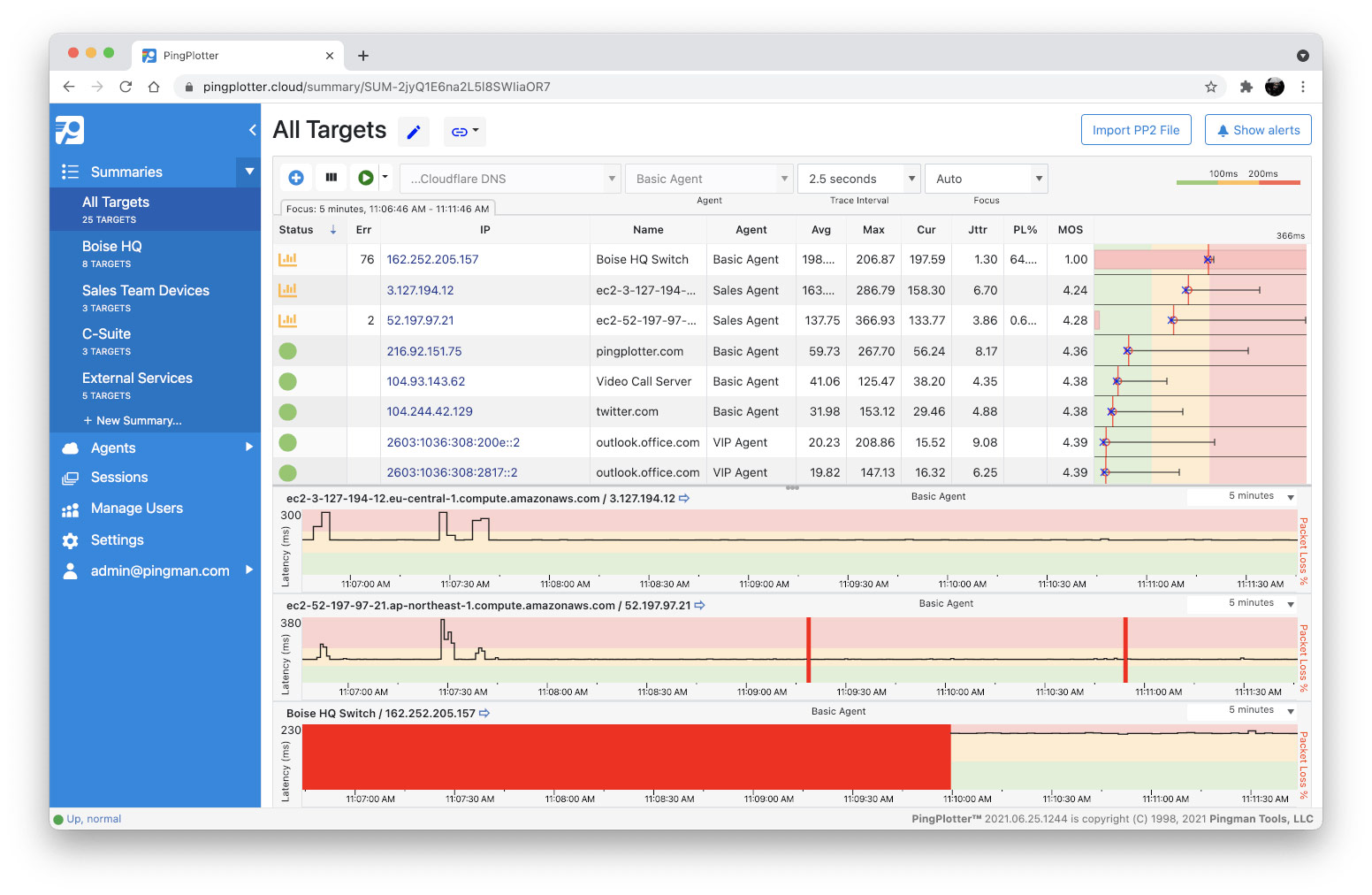

The reason PingPlotter pings each device instead of just running a traceroute each time is because the data in the packet is a little different than a traceroute. Every so often it will run another traceroute to see if the route to the final destination has changed. Once it finds all of those hops, PingPlotter starts pinging each of those hops every 2.5 seconds. When you first start a trace in PingPlotter, it initiates a traceroute so that it can find all of the hops between the computer and the intended target. Now that you understand how traceroute works, we can talk about how PingPlotter works. The important thing to know here is that the asterisks don’t necessarily mean packet loss, or that the device is offline.Īnd now you know more than you ever thought you would, or ever wanted to know, about traceroute. It might be that if I change my packet type from UDP to ICMP, I’d get a response….maybe.
Pingplotter ppr windows#
Windows machines use ICMP packets for tracert.
Pingplotter ppr mac#
Linux and Mac machines default to use UDP packets when running traceroute. This could be for a couple of reasons, but the most common one is that the device at TTL=5 deprioritized the packet, or is configured to not respond at all to the particular packet type I sent.

What does that mean?Īnytime you see an asterisk, it means that no response was received. All we got back were three asterisks (***). Hops 5, 6, 7, and 9 look a little different though. This is because it sends 3 packets to each hop so that we can get a general idea of the latency (response time). Hop 1 is my local router’s hostname, IP address, and then there are 3 times. The first line after the command states that it is running a traceroute to this domain (this IP address), 64 hops max (TTL=64), and the packet size is 52 bytes (which is relatively nothing). This goes on until your computer receives a response from the intended target, after which you should have a pretty good map of the network and an idea of how long each hop took to respond. The next packet your computer sends out will have a TTL of 2, and then 3, and then 4, and then….well, you get the idea. You’ll need a whole lot more TTL if you want to get past me, your router!” Your computer then notes the device it reached (your router) and the time it took to receive that response. The router will then send a message back to your computer to say, “Hey, you're out of TTL. The first packet that traceroute sends out has a TTL of 1, which means once it reaches the first hop (typically your local router), TTL will be set to 0. Traceroute takes advantage of this in order to discover all of the devices between the computer sending the packets and the final destination. Whenever a packet reaches a hop, the TTL value is reduced by 1 until it reaches the final destination, or TTL=0. Wait, what does TTL have to do with traceroute? If it gets to hop 31, then that device will send that packet to the data graveyard. For example, if my data packet has a TTL of 30, it can only travel through 30 hops.

TTL specifies the number of devices, or hops, the packet can travel through before being tossed out. This data packet contains a field called Time to Live, or TTL. When you start a traceroute, your machine will create a data packet and then send that packet out to the network. It helps answer questions like: why can’t I connect to the VPN? Why is Netflix buffering? Why is the Internet so slow? Network technicians use this to determine what could be causing a network resource to be failing. Traceroute (or tracert) is a command line tool that is used to map out the network and get an idea of how long it takes to send and receive data to specific endpoints. Before we can understand why PingPlotter shows something different than Traceroute, it’s helpful to understand how both technologies work. Now let’s get into the technical side of things. So sit back, put your feet up, and let PingPlotter do the work.Ĭomfy? Nice. We’ve been collecting network data for 20 years now and have gathered a wealth of knowledge that is at your disposal. The first thing to do is pour yourself a tall one, and then relax knowing that you can completely trust what PingPlotter is telling you. “Help! My service provider is refuting my PingPlotter data using Traceroute.


 0 kommentar(er)
0 kommentar(er)
